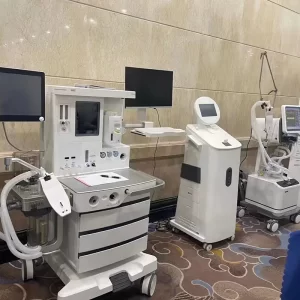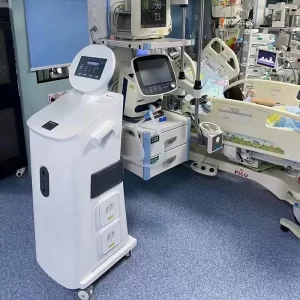Anesthesia machines and ventilators play an important role in patient care, and it is critical to determine the number of anesthesia breathing circuit sterilizers required for effective disinfection.This article aims to discuss the factors involved in calculating the recommended number of disinfection machines and the importance of their integration into healthcare facilities.
Factors to Consider
Several factors need to be considered when determining the number of anesthesia breathing circuit disinfection machines required:
Disinfection Cycle Time: The time required for each disinfection cycle of the machine needs to be taken into account. This includes the time for proper cleaning, disinfection, and drying of the breathing circuits.
Number of Anesthesia Machines or Ventilators: The total number of anesthesia machines or ventilators present in the facility is an important factor. Each machine that requires regular disinfection should be considered.

Availability of Machines: It is essential to assess the availability of disinfection machines and their capacity. If only a limited number of machines are available, the allocation needs to be planned accordingly.
Recommended Allocation
Based on the calculation considering the disinfection cycle time and the number of machines to be disinfected, the following recommendations can be made:
One-to-One Ratio: Ideally, it is recommended to have one anesthesia breathing circuit disinfection machine for each anesthesia machine or ventilator. This ensures that each machine can be promptly disinfected after use, minimizing the risk of cross-contamination.
Alternative Ratio: If the circumstances do not allow for a one-to-one ratio, a minimum recommendation is to have one disinfection machine for every two anesthesia machines or ventilators. Although this ratio is less ideal, it still provides a reasonable level of disinfection coverage.
Importance of Anesthesia Breathing Circuit Disinfection Machines
The integration of anesthesia breathing circuit disinfection machines into healthcare facilities offers several significant benefits:
- Enhanced Infection Control: Proper disinfection of anesthesia breathing circuits reduces the risk of healthcare-associated infections. By using dedicated disinfection machines, healthcare providers can ensure a high level of cleanliness and reduce the transmission of pathogens.
- Efficient Workflow: Having dedicated disinfection machines allows for a streamlined workflow. After use, the breathing circuits can be promptly disinfected, ensuring their availability for subsequent patients without delays.

- Patient Safety: Anesthesia breathing circuit disinfection machines contribute to overall patient safety. By minimizing the risk of cross-contamination, healthcare facilities can provide a safer environment for patients, reducing the likelihood of post-procedural infections.
In conclusion, determining the appropriate number of anesthesia breathing circuit disinfection machines is crucial for effective infection control in healthcare facilities. A one-to-one ratio of disinfection machines to anesthesia machines or ventilators is ideal, but a minimum recommendation of one disinfection machine for every two devices can also provide adequate coverage. The integration of these machines enhances infection control measures, streamlines workflow, and ultimately improves patient safety.